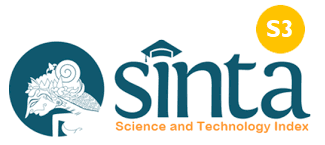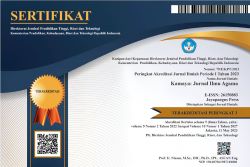Pengaruh Pembelajaran Berdiferensiasi Catur Pramana Terhadap Motivasi Dan Kemampuan Berpikir Kritis Siswa Sekolah Dasar
DOI:
https://doi.org/10.37329/kamaya.v8i4.4928Keywords:
Differentiated Learning, Catur Pramana, Learning Motivation, Critical Thinking SkillsAbstract
Low levels of learning motivation and critical thinking skills remain challenges in Hindu Religious Education at the elementary level. Students often show low engagement, procrastination, and weak analytical and argumentative abilities. This study examines the effect of differentiated learning oriented to the Catur Pramana learning cycle on the learning motivation and critical thinking skills of fifth-grade students in Cluster II, Buleleng District. The research employed a quantitative approach with a Posttest-Only Control Group Design. A total of 60 students were selected through simple random sampling. Data were collected using a motivation questionnaire and a critical thinking test, and analyzed with MANOVA using SPSS 20.0. The results revealed: (1) a significant difference in learning motivation between students taught with Catur Pramana-based differentiated learning and those taught conventionally (F = 63.915; p < 0.005); (2) a significant difference in critical thinking skills between the two groups (F = 15.398; p < 0.005); and (3) a simultaneous difference in motivation and critical thinking (Wilk’s Lambda = 11.936; p < 0.005). The experimental group achieved higher average scores, categorized as high, compared to the control group, which remained in the moderate category. In conclusion, integrating differentiated learning with the Catur Pramana learning cycle is proven effective in enhancing both learning motivation and critical thinking skills. These findings highlight the potential of Hindu local wisdom as a pedagogical innovation to strengthen the quality of elementary education.
References
Budiarta, I. N. E. (2023). Kajian Literatur Sistematis: Konseptualisasi dan Pengukuran Higher-Order Thinking Skills dalam Pembelajaran Fisika. Jurnal Pendidikan Fisika Undiksha, 13(2), 286–295.
Campbell, D. T., & Stanley, J. C. (1963). Experimental and Quasi-Experimental Designs for Research (1st ed.). Boston: Houghton Mifflin Company.
Candiasa, I. M. (2010). Statistik Univariat dan Bivariat Disertai Aplikasi SPSS. Singaraja: Undiksha Press.
Candiasa, I. M. (2011a). Pengujian Instrumen Penelitian Disertai Aplikasi ITEMAN dan BIGSTEPS. Singaraja: Undiksha Press.
Candiasa, I. M. (2011b). Statistik Multivariat Disertai Aplikasi SPSS. Singaraja: Undiksha Press.
Fadhilah, N., & Ananda, R. (2021). Penyebab Rendahnya Kemampuan Berpikir Kritis Siswa dan Solusinya melalui Model Pembelajaran Inovatif. Jurnal Basicedu, 5(4), 2156–2165.
Kafiar, D. Y. B. R., Sormin, S. A., & Betaubun, S. L. (2023). Penerapan Model Pembelajaran Jigsaw untuk Meningkatkan Kemampuan Berpikir Kritis Siswa Kelas II Sekolah Dasar. Journal of Education Action Research, 7(3), 336–343.
Mahfudz, M., & Sukarno, S. (2023). Pengaruh Teknik Pembelajaran Ex-Add terhadap Keterampilan Berpikir Kritis dan Kompetensi Pedagogik Mahasiswa Pendidikan Agama Islam. Jurnal Pendidikan dan Pembelajaran (EduLearn), 17(2), 221–228.
Nawati, A., Yulia, Y., & Khosiyono, B. H. C. (2023). Pengaruh Pembelajaran Berdiferensiasi Model Problem Based Learning terhadap Hasil Belajar IPA pada Peserta Didik Sekolah Dasar. Pendas: Jurnal Ilmiah Pendidikan Dasar, 8(1), 6167–6180.
Nugraha, Y. A., & Handayani, S. L. (2021). Strategi Guru dalam Meningkatkan Motivasi Belajar Siswa pada Pembelajaran Tematik. Jurnal Pendidikan Dasar Flobamorata, 2(1), 1–5.
Pebriana, P. H., & Amalia, R. (2022). Penerapan Model Motivasi ARCS untuk Meningkatkan Motivasi dan Hasil Belajar IPA. Jurnal Pendidikan MIPA, 12(2), 120–129.
Pratama, G. S., & Retnawati, H. (2018). Keefektifan Pembelajaran Berbasis Masalah untuk Meningkatkan Higher Order Thinking Skills (HOTS) dan Kemampuan Berpikir Kritis Siswa. Jurnal Riset Pendidikan Matematika, 5(2), 245–256.
Pribadi, B. A. (2012). Model ARCS: Strategi Meningkatkan Motivasi Belajar. Majalah Komunika, 5(1), 1–2.
Saputra, H., & Wahyuni, S. (2022). Dampak Pembelajaran Konvensional terhadap Kemampuan Berpikir Kritis Siswa dalam Pembelajaran Matematika. Jurnal Pendidikan Matematika (JUPITEK), 5(1), 1–8.
Sari, D. P., & Santoso, B. (2021). Model Motivasi ARCS (Attention, Relevance, Confidence, Satisfaction) dalam Meningkatkan Hasil Belajar Siswa. Journal of Education and Instruction (JOEAI), 4(1), 180–188.
Sucipto, I., Kusumah, D. H., & Gunawan, A. (2023). Pemberian Motivasi Peningkatan Prestasi Siswa SMK Armaniyyah. PEDAMAS (Pengabdian kepada Masyarakat), 1(1), 87–97.
Suja, I. W., Nurlita, & Retug. (2009). Pengembangan Model Pembelajaran Kimia Berbasis Siklus Belajar Catur Pramana. Jurnal Pendidikan dan Pengajaran, 42(1), 30–40.
Suja, I. W. (2019). Pendekatan Saintifik dalam Pembelajaran. Lembaga Pengembangan Pembelajaran dan Penjaminan Mutu (LPPPM) Universitas Pendidikan Ganesha, 6(1), 5–10.
Wijaya, I. K. W. B. (2020). Pengembangan Kompetensi 4C dan Keterampilan Proses Sains melalui Pembelajaran Berbasis Catur Pramana. Guna Widya: Jurnal Pendidikan Hindu, 7(1), 70–76.
Winahyu, F. H., Nulhakim, L., & Rumanta, M. (2024). Pengaruh Pembelajaran Problem Based Learning Berdiferensiasi dan Motivasi Belajar terhadap Hasil Belajar Matematika. Edukatif: Jurnal Ilmu Pendidikan, 6(1), 661–669.
Wulandari, N. P. A., & Sari, F. P. (2021). Pengaruh Model Pembelajaran Questioning dengan Pendekatan Socratic terhadap Kemampuan Berpikir Kritis Matematis Siswa. Jurnal Cendekia: Jurnal Pendidikan Matematika, 5(1), 936–947.
Wulandari, N. P. A., Wijaya, I. K. W. B., & Putra, I. B. G. (2022). Pengembangan Kecerdasan Emosional Peserta Didik Sekolah Dasar dengan Model Pembelajaran Catur Pramana. Jurnal Pendidikan, Agama dan Budaya, 6(1), 49–54.
Downloads
Published
How to Cite
Issue
Section
License
Copyright (c) 2025 Kamaya: Jurnal Ilmu Agama

This work is licensed under a Creative Commons Attribution-ShareAlike 4.0 International License.
An author who publishes in the Kamaya : Jurnal Ilmu Agama agrees to the following terms:
- Author retains the copyright and grants the journal the right of first publication of the work simultaneously licensed under the Creative Commons Attribution-ShareAlike 4.0 License that allows others to share the work with an acknowledgement of the work's authorship and initial publication in this journal
- Author is able to enter into separate, additional contractual arrangements for the non-exclusive distribution of the journal's published version of the work (e.g., post it to an institutional repository or publish it in a book) with the acknowledgement of its initial publication in this journal.
- Author is permitted and encouraged to post his/her work online (e.g., in institutional repositories or on their website) prior to and during the submission process, as it can lead to productive exchanges, as well as earlier and greater citation of the published work (See The Effect of Open Access).
Read more about the Creative Commons Attribution-ShareAlike 4.0 Licence here: https://creativecommons.org/licenses/by-sa/4.0/.





